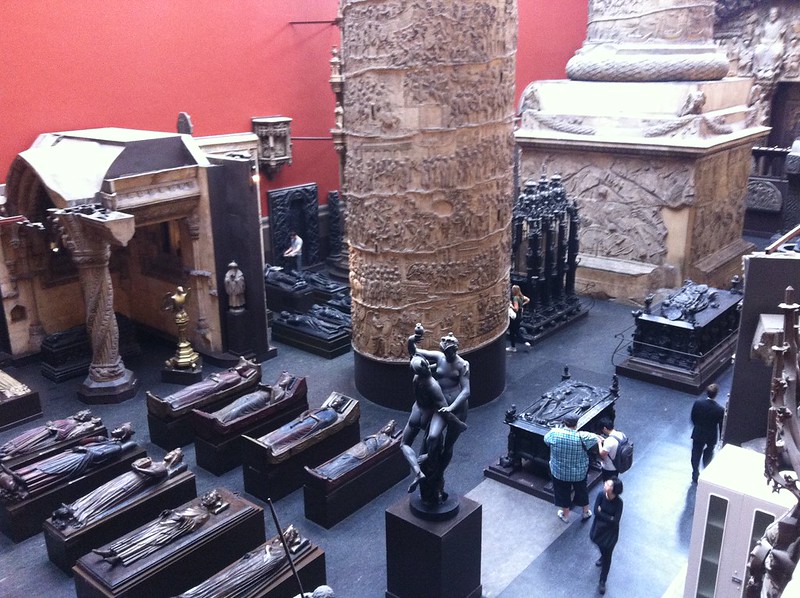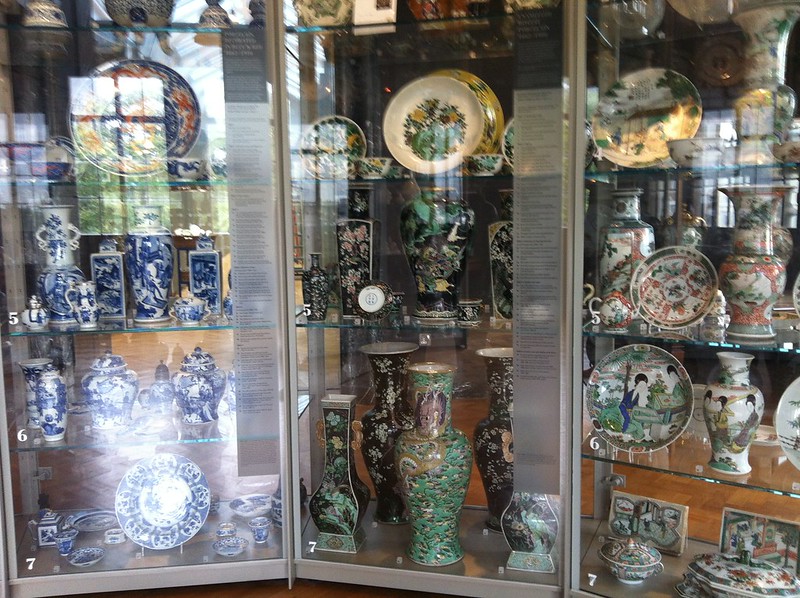Recently I have been making visits to the Victoria & Albert Museum since its next to my school. One thing that actually kept me from going there in the past was my not knowing what was the origins of the museum; I needed to know what processes had conspired to bring all these collections together, and without that I found it hard to make sense of it (who was curating it? who owned all this? what was all this?). However it appears that RCA’s history is connected with the V&A so a lot of this was eventually answered for me in the various orientation talks we had – beginning with the Great Exhibition of 1851 (thus explaining why one of the streets nearby is also named Exhibition Road) where they held the first “world exposition” to show of the products of the day’s top industrial designers. The origins of the school also begins as a Government School of Design, and a significant number of objects in the V&A’s collection were also part of what students from this Government School of Design would copy as part of their studies. Reminds me of the amazing sculptures, frescos and other antiquities I saw at the École nationale supérieure des Beaux-Arts, which I was told students would copy as part of their studies of classical art…

Some of these were used as references…
One section that really attracted me was the ceramics section. It was staggering. It was ridiculously huge. There was so much that I felt it was almost obscenely extravagant to hoard so much plateware. Seemingly endless corridors of glass and ceramics. Whole and perfect collections. A veritable pottery paradise! Isn’t the clay pot always used as that prime example of an object in a museum – when one thinks of the original intended utility of that pot in opposition to its newfound purpose as an artistic object, to be adored for its aesthetics only but never to be eaten or drunk from? Forever removed from its original purpose as a receptacle for food or water?

Ceramics of Britain
So many plates and gravy boats you gotta stack em…
Interesting blue and white from Iran
Another interesting thing I found out later was that some of this extravagant collection was in part due to slight changes in their collection policy – the V&A began by focusing only on what they deemed to be “elite productions”, but later, on recognising that their collections were a bit unbalanced due to their collection policy, they began shifting their focus and expanding their collection of more everyday objects, or everyday ceramics. Hence the acquisition of a huge range of ceramics including a lot of which we would recognise as very usable in other circumstances…
Personally speaking, I have always drawn a very clear line between “art” and “craft”. For me they exist in separate realms, with the crafts being seen as somewhat “lower” (no offense intended to those who view themselves as working in the crafts). The distinction between the two is that the arts are more about the content before form, and crafts are about the form before content. And since I have never worked with my hands to produce work (such as in that conventional sense that one might if one were doing woodwork or metalwork or printmaking), my main interest or role in producing work has always been about the content rather than the form or medium. Since in the end even the crafts require some degree of autonomous work to complement the material experience, I viewed that as a kind of dilution of intent. So it has been useful for me to read through parts of Glenn Adamson’s “Thinking Through Craft“, which also explores these ideas about the distinction between art and craft.
“Understandably, partisans of the crafts are unlikely to see craft’s second-class status within art theory as something to accept at face value, but this resistance has also led to a lack of serious thought about craft’s inferiority relative to art. While art is a matter of nomination within an infinite field — that is, art is anything that is called art — craft involves self-imposed limits.”

In another part of the museum, I found something else to convince me of the value of the craft object from a different perspective:
Craft objects stand for skill, quality and individuality. They may also, rightly or wrongly, be associated with job satisfaction and an idyllic lifestyle. Hand-making in small, non-industrial workshops allows the designer or maker to retain greater control over the production process.
Handmade objects often glory in their material and the signs of their makers’ touch. They celebrate rather than conceal the story of their manufacture. As a result, they command higher prices than industrially produced goods, even though they may sell to a very small market.
(…)
Makers of experimental craft objects have emphasized the inherent qualities and significance of their materials and techniques, sometimes at the expense of the traditional function of the object. For example, the vessels by ceramicists and wood turners shown here tend to celebrate their making more than their potential for use.
The artefact thus becomes a vehicle for the exploration of form and meaning, which was previously the preserve of the fine arts, and becomes less about function, the conventional concern of design. The resulting objects, produced as one-offs and in limited editions, are sold through similar networks as those used to sell fine art.
This is similar to what I do understand from the first chapter of Hertzian Tales – that it is also an exhortation for designers to approach materials more adventurously and creativity, such as in the way engineers approach it. However it is still strange how the worlds of art and craft both seem to run at the same time, parallel to each other, but without ever meeting. How different are these networks through which these highly prized elite crafts circulate – as opposed to the networks that fine art circulates within? And what if we have to discuss it in relation to how design is perceived? Isn’t this a really old debate to be having? Or am I just a stick in the mud about these concepts?
(But in any case I do see my next two years as time and space to explore new materials… actual real world materials!)















